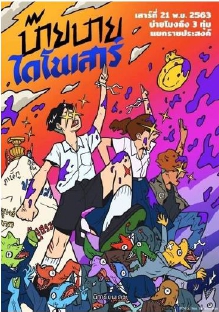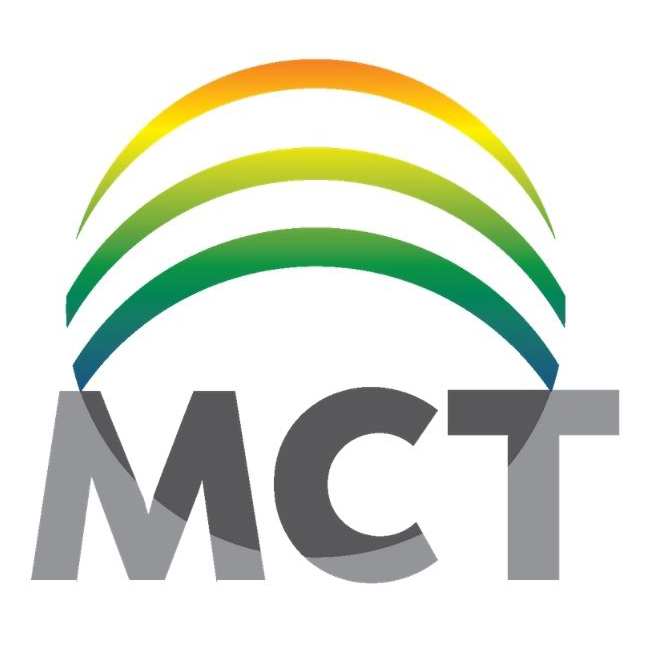Public Relations Strategies on Social Media by Student Movements During 2020 Thai Political Crisis
DOI:
https://doi.org/10.60101/jimc2023.841Keywords:
Public Relations Strategies, Social Media, Student Movements, Political CrisisAbstract
The objective of this study was to examine the content, public relations media, and strategies employed in public relations through social media by the student movement during the political crisis in Thailand in 2020. The study used a qualitative research approach to gather data from two prominent social media platforms, namely Facebook and Twitter. The data for this study were obtained via in-depth interviews conducted with three key informants. These informants were selected as representatives from two distinct student movements, namely the Bad Students Group and the United Front of Thammasat and Demonstration. The research findings indicate that the presentation of public relations content through social media involves three key components. Firstly, it involves leveraging the credibility of the message source, particularly the leader of the group. Secondly, the content should be presented clearly, honestly, and in alignment with the current trends or political situation, employing a strategic use of satirical language. Lastly, the content should be concluded with a hashtag determined by the student movement, serving as a focal point for conveying messages to recipients on social media. (2) The public relations media employed by the student movement is characterized by a cohesive design tailored to the specific target groups within the movement. (3) The social media public relations strategy adopted by the student movement is characterized by a proactive approach. This included operational methods that entail the coordination of special events and the establishment of collaborative partnerships. Communication techniques that prioritize the dissemination of information that is deemed noteworthy, transparent, and aimed at generating publicity. Furthermore, practitioners of public relations employ media selection tactics encompassing personal communication, and mass media to enhance the efficacy of their communication efforts, primarily with regard to achieving their objectives or aims.
References
เกษม จันทร์น้อย. (2537). สื่อประชาสัมพันธ์. รุ่งแสงการพิมพ์.
กุลธิดา สายพรหม. (2563). คุณค่าข่าวที่มีผลต่อการคัดเลือกประเด็นข่าวจากสื่อสังคมออนไลน์, วารสารวิชาการมนุษยศาสตร์และสังคมศาสตร์ มหาวิทยาลัยบูรพา, 28(2), 29-54.
คมกริช หาญกล้า. (2563). การสื่อสารโดยใช้โซเชียลมีเดียเพื่อเคลื่อนไหวทางการเมือง : กรณีศึกษาพรรคอนาคตใหม่ [วิทยานิพนธ์ปริญญามหาบัณฑิต]. TU Digital Collection (TUDC). http://digital.library.tu.ac.th/tu_dc/frontend/Info/item/dc:177724
ชาสินี สําราญอินทร์ พิมพาภรณ์ บุญประเสริฐ และชัญญา ลี้ศัตรูพ่าย. (2557). กลวิธีการใช้ภาษาเสียดสีในรายการ “เจาะข่าวตื้น”. มหาวิทยาลัยหาดใหญ่. https://www.hu.ac.th/Conference/conference2014/proceedings/data/3401/3401-4.pdf
ทิพย์วรรณ แสวงศรี. (2546). การวิเคราะห์เนื้อหา ความพึงพอใจและการใช้ประโยชน์จากนิตยสารลิซ่า [วิทยานิพนธ์ปริญญามหาบัณฑิต]. TU Digital Collection (TUDC). http://digital.library.tu.ac.th/tu_dc/frontend/Info/item/dc:115688
พีระ จิรโสภณ. (2551). ทฤษฎีการสื่อสารมวลชน. มหาวิทยาลัยสุโขทัยธรรมาธิราช.
นาวิก นำเสียง. (2554). เรื่องจริงเกี่ยวกับ สื่อสังคมออนไลน์. กรุงเทพธุรกิจ. http://bangkokbiznews.com/navik/20110913/409062
ลักษณา สตะเวทิน. (2542). หลักการประชาสัมพันธ์. (พิมพ์ครั้งที่ 2). เพื่องฟ้าพริ้นติ้ง.
วรวุฒิ ภักดีบุรุษ. (2542). กลยุทธ์การประชาสัมพันธ์ของสำนักงานคณะกรรมการส่งเสริมการลงทุนกับการตัดสินใจลงทุนในประเทศไทยของนักลงทุนต่างชาติ [วิทยานิพนธ์ปริญญามหาบัณฑิต]. Chulalongkorn University Intellectual Repository (CUIR). http://cuir.car.chula.ac.th/handle/123456789/13068
วิรัช ลภิรัตนกุล. (2553). การประชาสัมพันธ์ฉบับสมบูรณ์ (พิมพ์ครั้งที่ 12). สำนักพิมพ์จุฬาลงกรณ์มหาวิทยาลัย.
วาสนา จันทร์สว่าง. (2534). การประชาสัมพันธ์ในงานสาธารณสุข (พิมพ์ครั้งที่ 2). ภาพพิมพ์.
วัฒณี ภูวทิศ. (2551). การสื่อข่าวและการเขียนข่าว. (พิมพ์ครั้งที่ 4). สำนักพิมพ์มหาวิทยาลัยกรุงเทพ
สกนธ์ ภู่งามดี. (2546). การออกแบบและผลิตงานโฆษณา. แชร์โฟร์พริ้นติ้ง.
แสงเดือน ผ่องพุฒ. (2556). สื่อสังคมออนไลน์: แนวทางการนำมาประยุกต์ใช้. [บทความวิชาการ, ห้องสมุดวุฒิสภา]. http://library.senate.go.th/document/Ext6685/6685991_0004.pdf
สุทิษา ประทุมกุล. (2550). กลยุทธ์การประชาสัมพันธ์ของพรรคไทยรักไทยในภาวะวิกฤตการเมืองปี 2549 [วิทยานิพนธ์ปริญญามหาบัณฑิต]. ศูนย์การเรียนรู้และหอสมุด Learning Center and Library. http://libdoc.dpu.ac.th/thesis/127856.pdf
สำนักงานพัฒนาธุรกรรมทางอิเล็กทรอนิกส์. (2564, 9 เมษายน). ETDA เผยผลสำรวจ IUB 63 คนไทยใช้เน็ตปังไม่ไหว เกือบครึ่งวัน โควิด-19 มีส่วน. http://www.etda.or.th/th/newsevents/pr-news/ETDA-released-IUB-2020.aspx
อรวรรณ ปิลันธน์โอวาท. (2537). การสื่อสารเพื่อการโน้มน้าวใจ. สำนักพิมพ์จุฬาลงกรณ์มหาวิทยาลัย.
อุเทน แก้วกัณหาเดชากุล. (2554). การศึกษากลยุทธ์การประชาสัมพันธ์สโมสรฟุตบอลอาชีพในการแข่งขันไทยพรีเมียร์ลีกประจำปี 2554 [วิทยานิพนธ์ปริญญามหาบัณฑิต]. Chula-longkorn Univertsity Intellectual Repository (CUIR). http://cuir.car.chula.ac.th/handle/123456789/26513




